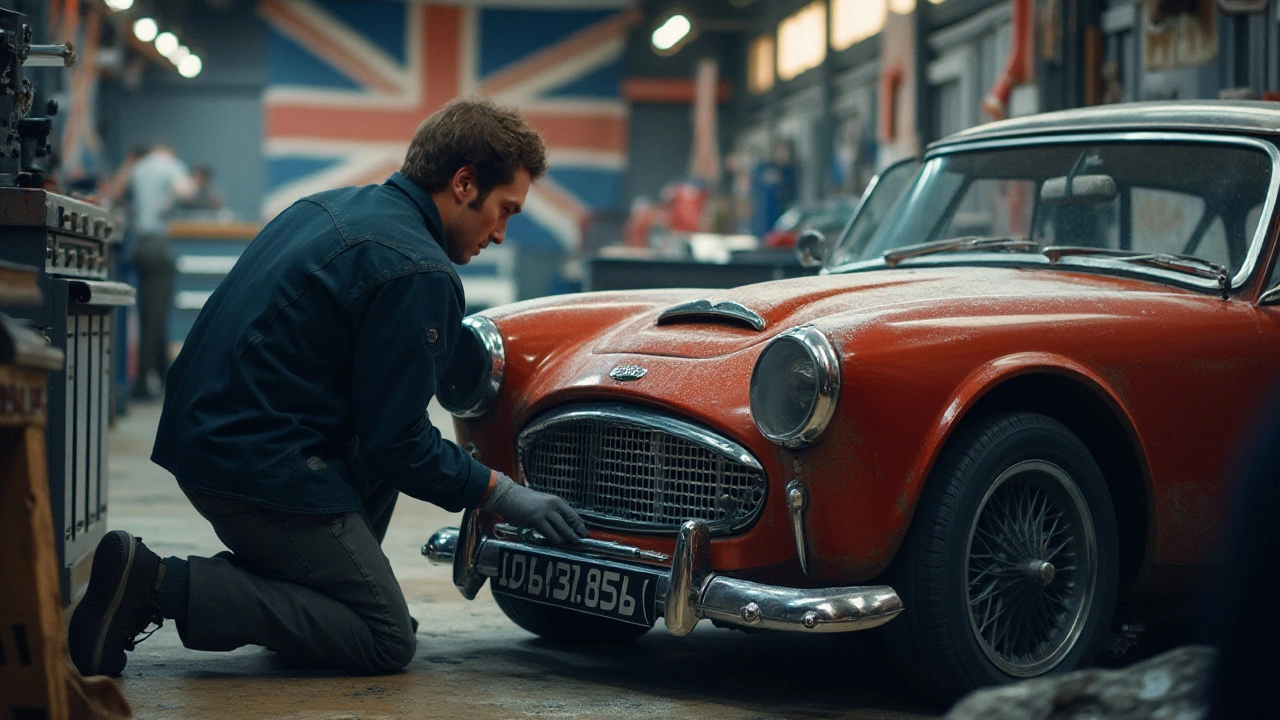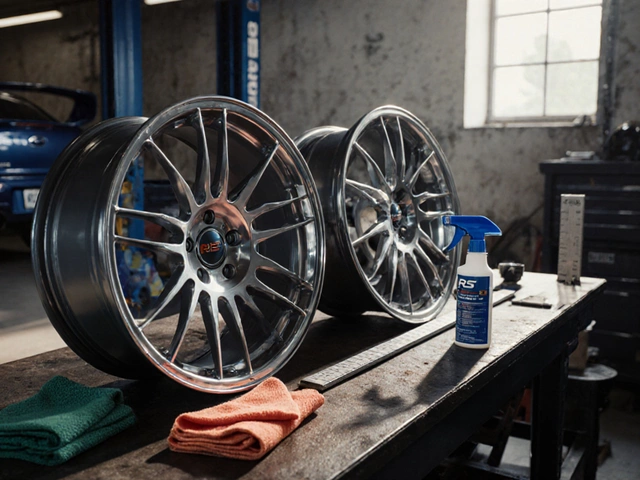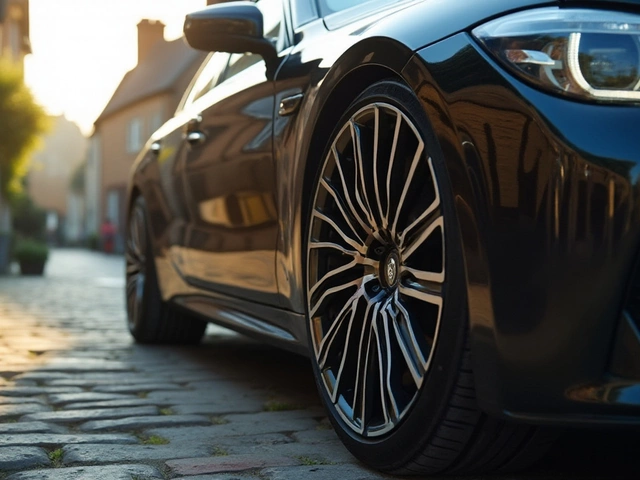When it comes to personalizing a vehicle or enhancing its performance, car enthusiasts often turn to body kits. Not just about transforming the look, these kits can redefine aerodynamics and performance.
A car body kit typically includes several key components like bumpers, side skirts, and spoilers. These parts help in reducing drag, improving fuel efficiency, and giving a car a customized edge.
If you're considering a body kit, understanding its impact on the function and aesthetic of your vehicle is crucial. From the materials used to the way they are installed, each element plays a significant role.
Before you dive into modifications, knowing what you want out of a body kit—be it for style or speed—can lead to more informed choices and an enjoyable driving experience.
- Introduction to Car Body Kits
- Components of a Body Kit
- Benefits of Installing a Body Kit
- Choosing the Right Body Kit for Your Vehicle
Introduction to Car Body Kits
Car body kits have fascinated auto enthusiasts for decades, bringing transformative changes not just to the vehicle's looks, but also to its function. A key reason people are drawn to these custom modifications is their ability to impart a unique style and personality to a car, making it stand out in a monotone sea of factory models. But more than a stylistic tool, body kits can significantly impact a vehicle’s aerodynamics, thereby enhancing its overall performance. This dual benefit of aesthetics and performance has made body kits an integral part of the auto modification world.
The concept of using exterior modifications to alter a car's profile isn't new. In fact, body kits have their roots deeply embedded in the motorsport industry. Early on, racing teams began experimenting with different materials and shapes to improve their vehicles' speed and handling capabilities. Over time, these experimental designs made their way off the racetrack and onto the streets, driven by enthusiasts eager to mimic the sleek designs of their racing idols. Today, the market offers a multitude of kits made from various materials such as fiberglass, polyurethane, and carbon fiber, each offering different benefits and challenges.
Interestingly, the rise of vehicle modification in popular culture has further spurred the body kit market. Movies and video games have glamorized the idea of customizable cars, making it an appealing venture for individuals looking to express their personal style through their vehicles. According to a report by Grand View Research, the automotive aftermarket is expected to reach significant figures, driven in part by the rising demand for such modifications. When installing a body kit, the process typically involves replacing or overlaying existing parts with new panels, drastically changing the vehicle’s silhouette. For those eager to embrace the trend, the choices can be overwhelming, ranging from subtle lip kits to complete wide-body conversions.
“The aesthetic changes can be breathtaking, but enthusiasts must also consider the enhancement to their vehicle’s handling capabilities,” remarks automotive expert John R. Sanchez. “Body kits aren't just about turning heads; they're about improving the driving experience.”
Whether you're driving a compact sedan, a sports car, or an SUV, the allure of body kits lies in their ability to offer a new dimension to driving. As you journey through the world of car body kits, remember that they are more than just additions; they are a reflection of personality and an exploration of performance possibilities. Embrace the change, and you'll find your vehicle transformed in unexpected and exciting ways.

Components of a Body Kit
When it comes to car body kits, the transformation they offer goes beyond just a superficial makeover. At their core, these kits consist of a variety of parts that work not only to enhance the appearance but also to affect the vehicle's aerodynamics and performance. Each element, from bumpers and side skirts to spoilers and diffusers, plays a significant role in the way a car moves and looks. By swapping out these parts, enthusiasts can customize their vehicles in ways that are unique and personal, pushing the boundaries of factory design with striking results.
The bumper is often the most noticeable part of any car body kit as it sets the tone for the vehicle's new look. Both the front and rear bumpers can be replaced, each with its own purpose. The front bumper is particularly important for reducing aerodynamic drag, helping the car cut through the air more efficiently. This lowered drag can lead to improved fuel efficiency, making it a functional addition beyond its visual appeal. Rear bumpers, on the other hand, can alter the stance and profile of the vehicle, giving it a more aggressive or sleek appearance.
Side skirts are another critical component, running along the sides of the car between the wheels. These are not just for show; they serve to channel air more smoothly along the sides of the car, reducing turbulence and lifting forces that could hinder performance. By enhancing the way air flows around the car, side skirts can contribute to improved stability at higher speeds. This is particularly advantageous for motorsports enthusiasts who demand high performance. Designers often match side skirts with the lines and contours of the vehicle, ensuring a seamless integration that looks as good as it functions.
Perhaps one of the most iconic additions in a body kit is the spoiler. Typically mounted on the rear of the vehicle, spoilers can have a dramatic impact on both look and function. By redirecting airflow, spoilers increase downforce on the car, thus improving grip for better handling and acceleration. Some enthusiasts opt for larger, more pronounced spoilers, while others may choose a subtle lip spoiler for a low-key effect. Either choice can significantly alter the vehicle's performance characteristics, providing drivers with enhanced control.
Diffusers are subtle yet powerful components not every enthusiast considers; however, their impact is substantial. Positioned under the rear bumper, diffusers work by creating low-pressure zones, which assists in reducing lift. By managing airflow beneath the car, diffusers help in stabilizing the vehicle, particularly at higher speeds. This stability allows for better cornering and overall control, making them an essential component for serious racers. Some car enthusiasts invest in complex diffuser systems, creating a distinct visual cue that complements the aggressive stance.
"Transforming your car with a body kit is not just about looking good on the road. It’s an art of finding harmony between aesthetics and aerodynamics," says car customization expert Chris Leung.
Each of these components can be tailor-made to fit specific car models, ensuring a perfect fit and function. The materials used in manufacturing these parts can range from fiberglass to polyurethane and carbon fiber, each offering different benefits for durability, weight, and cost. There exists a wide variety of kits available, from subtle enhancements to full-blown transformations fit for a show circuit. Choosing the right materials and design for your vehicle modification needs can ensure a rewarding experience both in looks and performance.

Benefits of Installing a Body Kit
Installing a car body kit offers several advantages that go beyond merely boosting the look of your ride. One of the primary benefits is the heightened aerodynamic efficiency. By strategically designing components such as front and rear bumpers, splitters, and side skirts, a body kit helps decrease air drag. This reduction in drag can lead to improved fuel efficiency and better vehicle handling, especially at higher speeds. Enthusiasts often relish in the fact that their cars 'hug' the ground more closely, enhancing stability and providing a more comfortable ride.
Visually, a body kit can completely alter the exterior appearance of a vehicle, turning an ordinary sedan into a sports-inspired powerhouse. These stylish modifications allow car owners to express their personal taste, often reflecting a custom look that sets their car apart from the sea of factory-standard models. It's not just about appearances, though; a well-fitted kit can actually add to the resale value of a vehicle, especially if the kit is from a reputable brand or designer.
Customization potential is another core benefit of body kits. Since many kits are modular, car owners can choose specific pieces to add or replace, allowing improvements to be made progressively. This means you can start with just a spoiler and grow your kit as your budget allows. Additionally, the materials used in body kits—ranging from lightweight fiberglass to durable polyurethane—offer varying levels of durability and weather resistance, making them versatile choices depending on the car's intended use and owner’s preferences.
According to a study by AutoTrader, vehicles with customized body kits tend to spend less time on the market and can sell for 10% more than their non-modified counterparts. This can be an interesting consideration for owners looking to invest in their current cars with an eye on future resale prospects.
The global automotive aftermarket was valued at USD 390 billion in 2022, a large segment of which encompasses body kits and customization parts, illustrating the significant interest and demand for such products among car owners worldwide."This reinforces the idea that investing in a body kit isn't just a choice for aesthetics, but often a strategic financial move as well.
Lastly, many find the experience of upgrading with a body kit rewarding on a personal level. Getting hands-on and involved with your car can bring a profound sense of satisfaction and pride. It’s not just about what the car achieves on the road, but how it feels to drive something uniquely yours. Whether you do it for speed, efficiency, or looks, the impact of a body kit on your vehicle can be transformative and exhilarating.

Choosing the Right Body Kit for Your Vehicle
Picking the perfect car body kit for your ride is much like choosing an outfit that not only looks good but also feels right and serves a purpose. Start by identifying whether your primary goal is to boost performance or simply to make heads turn. The market offers a plethora of options which can be overwhelming—even for the seasoned enthusiast. Tuning in to what your car really needs is a great first step. Is it a nimble sports car yearning for more speed, or perhaps an SUV requiring a tougher look? Your vehicle type and your driving style should significantly influence your decision.
When evaluating potential body kits, one must consider the material. Most kits are crafted from fiberglass, polyurethane, or carbon fiber, each offering unique advantages. Fiberglass is lightweight and affordable, with a precision fit, but it can be prone to cracking. Polyurethane, while heavier, offers better durability and flexibility—which can handle minor bumps with ease. Carbon fiber, loved by racers, is the lightest and strongest, however, it comes at a premium price and often has to be meticulously cared for to avoid damage. These choices can impact both the look and performance of your vehicle modification, so weigh the pros and cons carefully.
Another consideration is the color match and finish. A mismatched panel can diminish the aesthetic appeal, so some owners prefer custom paint jobs for a consistent look. Functionality, style, and ease of maintenance should also play into your decision. Envision how these kits will interact with your daily life; will they require frequent upkeep or adjustments? Are they low enough to affect your driveway or speed bump navigation? Weigh these practicalities against the benefits to find a harmonious balance.
"The right body kit can transform a regular car into a piece of art on wheels," remarks Julian Ramos, a respected auto restylist. "It's about enhancing what the vehicle already has, not overshadowing it."
Installation is another factor many don't consider until it's too late. While some might feel confident handling this as a DIY project, many drivers choose professional installation for a seamless fit and finish. Professionals possess the experience and tools required to ensure precision, which is crucial for avoiding common pitfalls such as alignment issues. Before committing, get an estimated cost for installation and factor it into your budget.
Budget is indeed pivotal, not just for the initial purchase, but for long-term maintenance and potential resale value. High-end kits might justify their cost with performance gains or increases in vehicle value, while budget models offer aesthetic upgrades at a fraction of the cost. Consider your financial leeway and the intended longevity of your vehicle when deciding. Are you investing for a short thrill, or a long-term upgrade? These questions can guide you through making a smart choice.
In summary, choosing the right body kit involves a mix of personal taste and practical evaluation. With goals clearly outlined and considerations taken into account, you can embark on customizing your car with assurance. Whether it's about boosting aerodynamics or turning heads at the next car meet, the right body kit is out there, ready to cater to your desires.






